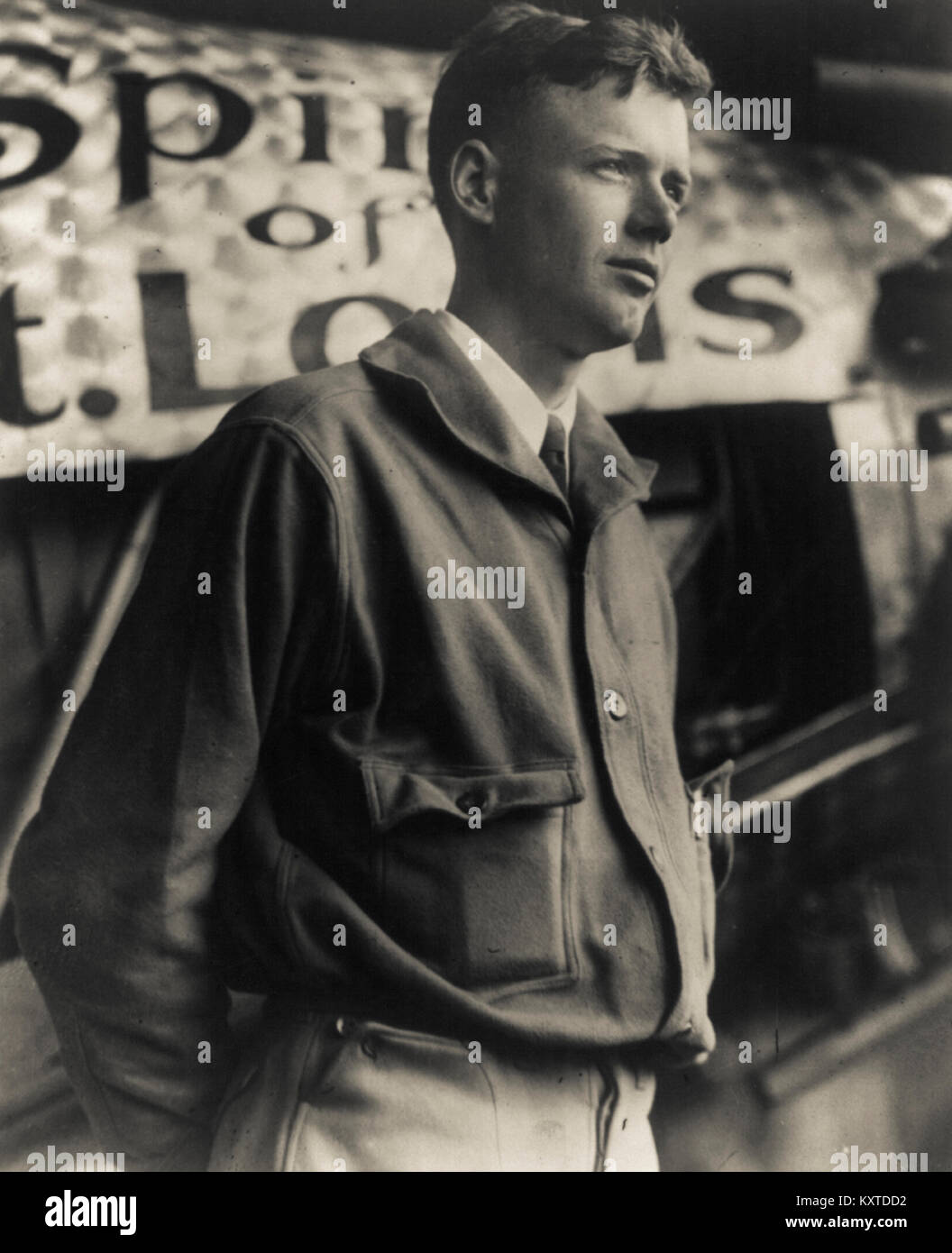Charles A. Lindbergh aviator and American hero. In the early morning of Friday, May 20, 1927, Lindbergh took off from Roosevelt Field across the Atlantic Ocean for Paris, France. His monoplane was loaded with 450 U.S. gallons of fuel that was strained repeatedly to avoid fuel line blockage. The aircraft weighed about 2,710 lb , and takeoff was hampered by a muddy, rain-soaked runway. Lindbergh's monoplane was powered by a J-5C Wright Whirlwind radial engine and gained speed very slowly during its 7:52 a.m. takeoff, but cleared telephone lines at the far end of the field.

Image details
Contributor:
American Photo Archive / Alamy Stock PhotoImage ID:
KXTDD2File size:
20.9 MB (500.7 KB Compressed download)Releases:
Model - no | Property - noDo I need a release?Dimensions:
2439 x 3000 px | 20.7 x 25.4 cm | 8.1 x 10 inches | 300dpiMore information:
This image could have imperfections as it’s either historical or reportage.
Charles Augustus Lindbergh (February 4, 1902 – August 26, 1974), nicknamed Lucky Lindy, The Lone Eagle, and Slim, [1] was an American aviator, military officer, author, inventor, explorer, and environmental activist. At age 25 in 1927, he went from obscurity as a U.S. Air Mail pilot to instantaneous world fame by winning the Orteig Prize–making a nonstop flight from Roosevelt Field, Long Island, New York, to Paris, France. He covered the 33 1⁄2-hour, 3, 600 statute miles (5, 800 km) alone in a single-engine purpose-built Ryan monoplane, Spirit of St. Louis. This was the first solo transatlantic flight and the first non-stop flight between North America and mainland Europe. Lindbergh was an officer in the U.S. Army Air Corps Reserve, and he received the United States' highest military decoration, the Medal of Honor, for the feat. His achievement spurred interest in both commercial aviation and air mail, and Lindbergh himself devoted much time and effort to promoting such activity. Lindbergh's historic flight and celebrity status led to tragedy. In March 1932, his infant son, Charles Jr., was kidnapped and murdered in what American media called the "Crime of the Century" and described by H. L. Mencken as "the biggest story since the Resurrection". The case prompted the United States Congress to establish kidnapping as a federal crime once the kidnapper had crossed state lines with his victim. By late 1935 the hysteria surrounding the case had driven the Lindbergh family into voluntary exile in Europe, from which they returned in 1939. Before the United States formally entered World War II, some people accused Lindbergh of being a fascist sympathizer. An advocate of non-interventionism he supported the antiwar America First Committee, which opposed American aid to Britain in its war against Germany, and resigned his commission in the United States Army Air Forces in 1941 after President Franklin Roosevelt publicly rebuked him for his views.